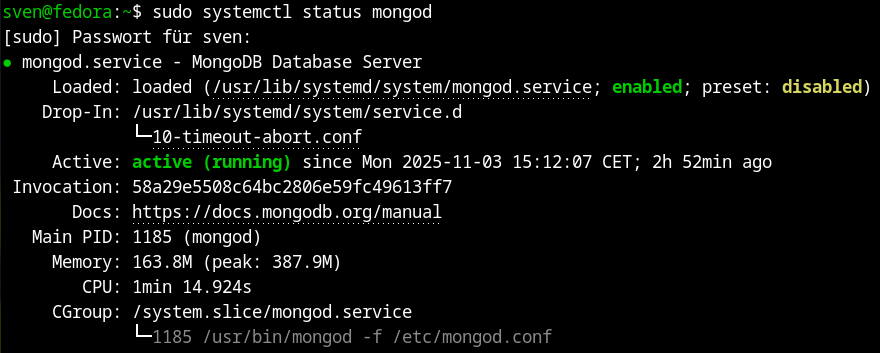MongoDB in general
General information about MongoDB
- Initial release: 11.02.2009
- Company: MongoDB Inc
- Headquarter is in Paramount Plaza, New York, USA
What is MongoDB?
MongoDB is a document-oriented NoSQL database that stores data in flexible, JSON-like documents, allowing for easy storage and retrieval of structured, semi-structured, and unstructured data. Unlike traditional relational databases that use tables and rows, MongoDB uses collections and documents, making it more adaptable to changing data structures. It was designed to handle large volumes of data and is known for its scalability, flexibility, and ease of use.
On Linux, you can check the status of the server with sudo systemctl status mongod.
On Windows in the PowerShell, the command is: Get-Service -Name MongoDB

MongoDB features:
- JSON Data Model with Dynamic Schemas
- Auto-Sharding for Horizontal Scalability
- Built-In Replication for High Availability
- Rich Secondary Indexes, including geospatial
- TTL indexes
- Text Search
- Aggregation Framework & Native MapReduce
On Fedora – general information
- Location of the repo: mongodb-org.7.0
- Package name: mongodb-org-database-7.0.25-1.el9.src.rpm
- Installation size: 175.9 MiB
- Licence: Server Side Public Licence.
What is Mongoshell?
The MongoShell is an interactive command window for the MongoDB database. You can use it for the CRUD operations. The MongoShell comes with the installation of MongoDB. After test, you type in the commands.

On Fedora – general information
- Location of the repo: mongodb-org-7.0
- Package name: mongodb-mongosh-shared-openssl3-2.5.9-1.el8.src.rpm
- Installation size 263.4 MiB
- Licence: ASL 2.0 and Proprietary
What is CRUD?
Create, Read, Update, Delete